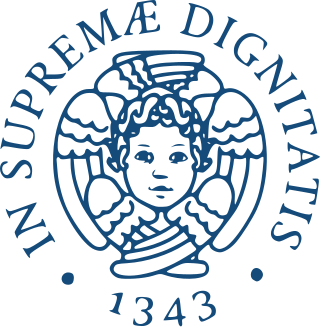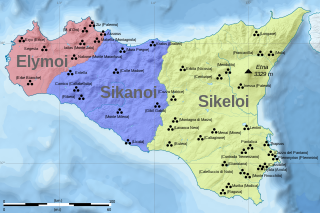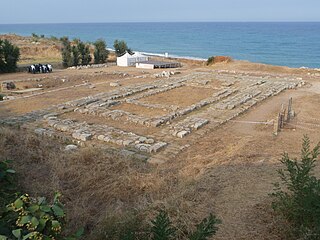This article has multiple issues. Please help improve it or discuss these issues on the talk page . (Learn how and when to remove these template messages)
|
Hebdomada Aenigmatum is the first magazine [1] of crosswords in Latin. [2] [3] [4]
This article has multiple issues. Please help improve it or discuss these issues on the talk page . (Learn how and when to remove these template messages)
|
Hebdomada Aenigmatum is the first magazine [1] of crosswords in Latin. [2] [3] [4]
The magazine features several crosswords and word puzzles in Latin, a variation of Sudoku with Roman numerals, a section with global news, a comic strip of Incredibilis Snupius (English: Snoopy) and a section on miscellaneous subjects (including films, recipes and sport). Special editions included two Christmas editions (“Editio Natalicia”) in December 2014 and December 2015 [5] and the “Ego sum Carolus” (Je suis Charlie) edition in January 2015 to support freedom of speech after the terrorist attack at the French satirical weekly newspaper Charlie Hebdo in Paris.
The first crossword puzzle in ancient Greek appeared in April 2015 as an annex to the 9th issue of Hebdomada Aenigmatum. It developed into a separate magazine [6] with the name of Ὀνόματα Kεχιασμένα (Onomata Kechiasmena). [7] with crosswords, word puzzles, join-the-dots where the dots are sequentially marked with Greek letters, a strip of Asterix in ancient Greek, two pages of recent news in ancient Greek in collaboration with Akropolis World News. [8]
Launched in June 2014, Hebdomada Aenigmatum is published monthly and is available free of charge upon registration on the website. [9] The editor-in-chief is Lucas Cupidus [10] in collaboration with Herimannus Novocomensis, Iconoclastes, Lydia Ariminensis, Theodorus. [11]
A contest of Latin crosswords (Certamen Aenigmatum Latinorum) has been organized twice by the Greek-Latin Festival in 2016 [12] and 2018 [13] at the École normale supérieure de Lyon. Latin crosswords have been the subject of several conferences at Scuola Normale Superiore di Pisa. [14]
Both Hebdomada Aenigmatum and Onomata Kechiasmena are included in a memorandum of understanding with the Italian Ministry of Education to promote the use of Latin and Greek crosswords as a tool to facilitate learning ancient languages. [15]

Ancient Greek includes the forms of the Greek language used in ancient Greece and the ancient world from around 1500 BC to 300 BC. It is often roughly divided into the following periods: Mycenaean Greek, Dark Ages, the Archaic or Epic period, and the Classical period.

Ulisse Dini was an Italian mathematician and politician, born in Pisa. He is known for his contribution to real analysis, partly collected in his book "Fondamenti per la teorica delle funzioni di variabili reali".

The University of Pisa is a public research university in Pisa, Italy. Founded in 1343, it is one of the oldest universities in Europe. Together with Scuola Normale Superiore di Pisa and Sant'Anna School of Advanced Studies, it is part of the Pisa University System.

Elymian is the extinct language of the ancient Elymian people of western Sicily. Its characteristics are little known because of the extremely limited and fragmentary nature of the surviving texts.

The Scuola Normale Superiore in Pisa is a public university institution in Pisa and Florence, Tuscany, Italy, currently attended by about 600 undergraduate and postgraduate (PhD) students.
Education in Italy is compulsory from 6 to 16 years of age, and is divided into five stages: kindergarten, primary school, lower secondary school, upper secondary school and university (università). Education is free in Italy and free education is available to children of all nationalities who are residents in Italy. Italy has both a private and public education system.
The Sant'Anna School of Advanced Studies is a special-statute, highly selective public research university located in Pisa, Italy.

Sabino Cassese is an Italian jurist, former minister for the public function in the Ciampi government (1993–1994), and judge of the Constitutional Court of Italy (2005–2014).
Glenn Warren Most is an American classicist and comparatist originating from the US, but also working in Germany and Italy.
The Bartolozzi Prize is awarded by the Italian Mathematical Union every two years. Until 2017 it was awarded to an Italian mathematician below the age of 34. Starting with the 2019 edition, the prize is now reserved for female Italian mathematicians below the age of 40. The prize is entitled in the memory of the Italian mathematician Giuseppe Bartolozzi and is worth €3,000.

Gian Biagio Conte is an Italian classicist and professor of Latin Literature at the Scuola Normale Superiore of Pisa.

Luigi Ambrosio is a professor at Scuola Normale Superiore in Pisa, Italy. His main fields of research are the calculus of variations and geometric measure theory.

Caulonia or Caulon was an ancient city on the shore of the Ionian Sea near Monasterace, Italy.

Alessandro Faedo was an Italian mathematician and politician, born in Chiampo. He is known for his work in numerical analysis, leading to the Faedo–Galerkin method: he was one of the pupils of Leonida Tonelli and, after his death, he succeeded him on the chair of mathematical analysis at the University of Pisa, becoming dean of the faculty of sciences and then rector and exerting a strong positive influence on the development of the university.
Vincenzo Di Benedetto was an Italian classical philologist.

Fabrizio Sergio Donadoni was an Italian archaeologist who worked in the disciple of Egyptology.

The Garden of Archimedes is a museum for mathematics in Florence, Italy, founded in 2004. It has been compared to the National Museum of Mathematics in New York City, the only museum in North America devoted to mathematics.

Luca Desiata is an Italian manager, Latinist and art curator. He was the CEO of SOGIN between 2016 and 2019. He is the founder and editor-in-chief of the magazine of Latin crosswords Hebdomada Aenigmatum and of the magazine of crosswords in Ancient Greek Onomata Kechiasmena. He is the curator of the Corporate Art Awards.
Maria Timpanaro Cardini (1890–1978), born Maria Cardini, was an Italian philologist who studied the history of ancient philosophy and history of science.

Siculian is an extinct Indo-European language spoken in central and eastern Sicily by the Sicels. It is attested in less than thirty inscriptions from the late 6th century to 4th century BCE, and in around twenty-five glosses from ancient writers.